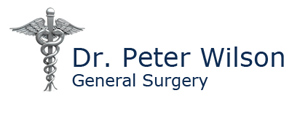Breast Disease
Breast disease is very common, and most general surgeons see several patients with breast problems every week. Getting checked for breast disease is always an anxiety-provoking situation. Some patients see me because they have noticed a change in the breast, such as a mass, skin changes, or new nipple discharge. Others are referred after a change is found on a routine, screening mammogram. Usually a diagnostic mammogram and ultrasound is the first step to characterize the breast lesion. Some findings are clearly benign, such as cysts, while others are more concerning for cancer. Suspicious findings usually need a breast biopsy, which is the best way to get a diagnosis. A breast biopsy is typically an outpatient procedure performed in the breast center or operating room. The biopsy takes a small piece of tissue from the area of concern so that the pathologist can check it under a microscope. No matter what, the most important first step for a patient concerned about breast disease is to make an appointment with your physician and follow his advice. I try hard to get a definitive diagnosis of all breast lesions within a few days from the time a breast lesion is found. Sometimes, specialized tests like breast MRI help define the nature of the problem, and women with a strong family history of breast disease might need genetic testing. If you are unhappy with your physician’s recommendation, a second opinion is reasonable. Third or fourth opinions usually only delay diagnosis and treatment. Finally, after seeing your doctor, make sure to schedule follow up appointments. After seeing a patient with benign findings on exam, imaging, and biopsy, I always see the patient back in a few months just to make sure nothing has changed. Most breast findings turn out to be benign, but the best treatment for a breast cancer is to get the diagnosis and start treatment as soon as it is noticed.
